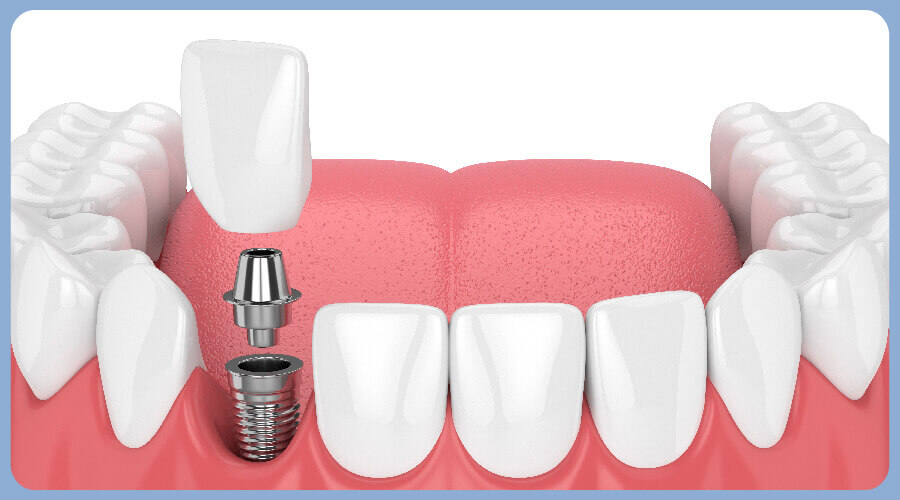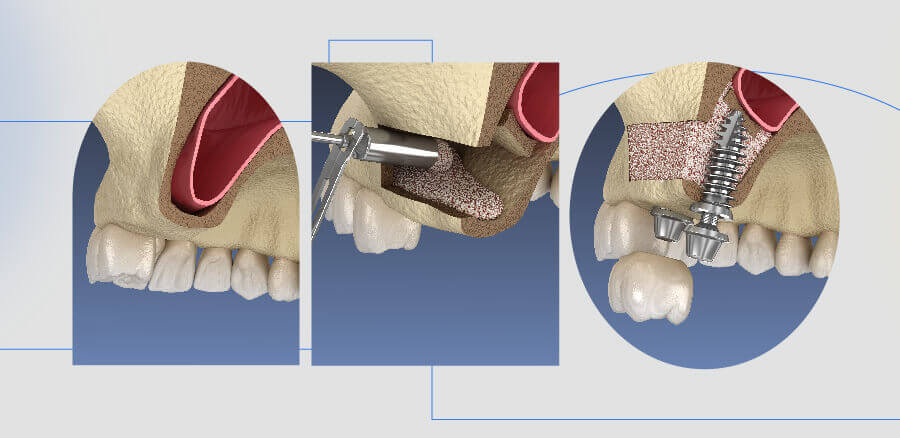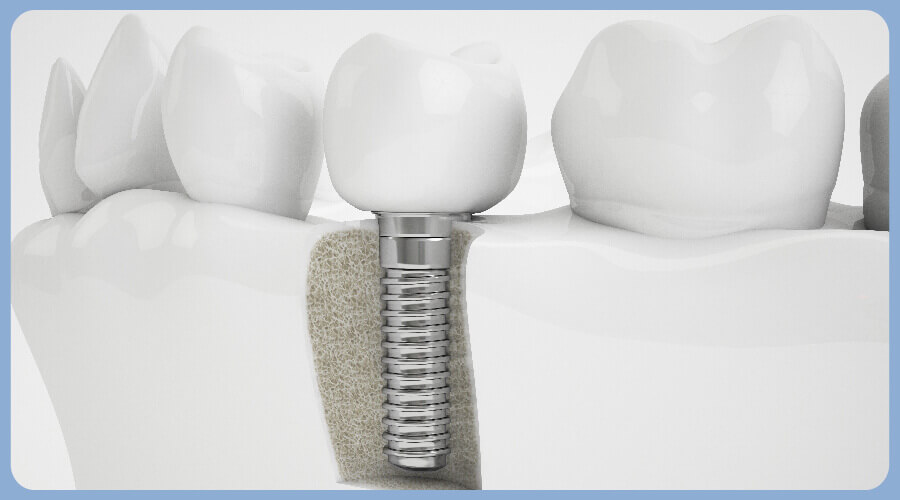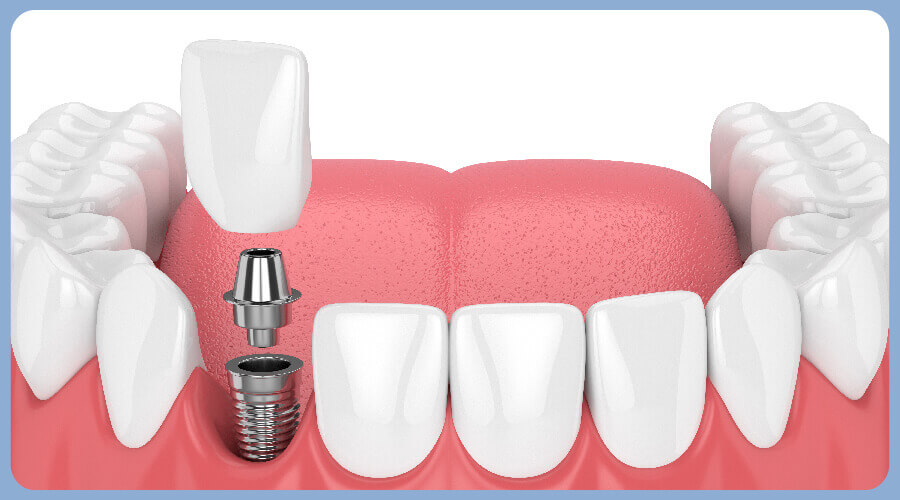Dental implants offer excellent functional and aesthetic solutions for the replacement of one or more missing teeth. In this article, we will provide an overview of the types of dental implants and their characteristics.

What is a dental implant?
A dental implant is essentially a biocompatible screw, usually made of titanium, that serves as a replacement for the missing tooth root. Since the implant is inserted into the jawbone, the gums and smile line remain unchanged, while the crown (the visible tooth) placed on top of the titanium screw matches the color and shape of the surrounding teeth, ensuring a natural appearance. The advantages of dental implants include undisturbed speech and eating, comfort and stability, as well as long-lasting results.

What are the types of dental implants?
The types of dental implants primarily differ in the implantation phases, the screw itself, and the superstructure.

One-stage dental implant
The advantage of the one-stage implant is that the crown can be immediately placed after healing, without the need for an additional surgery. If there is insufficient bone structure, a subperiosteal implant, placed on the jawbone, is generally used. An alternative is a transosteal implant, which is a needle-shaped screw fixed in the jawbone using a frame.

Two-stage dental implant
The most common type is an endosteal dental implant, which is implanted into the jawbone. After a few months of osseointegration, the superstructure can be placed on top of the implant, making it a two-stage procedure. It is crucial to have an adequate quantity and quality of surrounding bone for successful implantation. In cases where there is insufficient bone, bone grafting may be performed before implant placement, either in the lower jaw or the upper jaw (sinus lift).

Classification based on screw type
The advantage of a screw-retained dental implant is that the superstructure can be easily, quickly, and painlessly replaced when needed. The screws used for this purpose can be wide or narrow, with dense, sparse, or double threads. Proper screw retention is a key factor in dental implantation, as it ensures stability of the restored tooth and prevents the entry of bacteria that can cause inflammation.

Classification based on diameter
Standard dental implants have a diameter ranging from 3.5 to 4.2 millimeters, wide platform implants range from 4.6 to 6 millimeters, while mini implants have a diameter of 2 to 3.5 millimeters. The choice between these options depends primarily on the position of the missing teeth and the quality of the bone structure. Wide platform implants are typically used for replacing molar teeth.

Different forms of dental implant placement
Temporary implant placement aims to relieve the load during the osseointegration process. Immediate implant placement can be performed if adequate bone is present, allowing for immediate implantation after tooth extraction. In cases where bone grafting is not possible or the region has been significantly compromised, basal implant placement can be a suitable solution. This technique involves placing the implant horizontally and vertically into the strongest part of the bone. Laser implant placement utilizes medical lasers to minimize trauma to the gum tissue.

Differences in superstructure material
The superstructure, which is screwed into the implant, protrudes above the gums and serves a function similar to the prepared tooth stump in traditional restorations. It can be made of titanium or zirconium, with the main difference being aesthetic. Zirconium has the advantage of resembling natural teeth in terms of light absorption and reflection. Making it a suitable choice for replacing front teeth. The superstructure is typically used to support the crown, which replaces the visible part of the tooth above the gum line. Crowns can be made of a combination of metal and ceramic or entirely from zirconium, which not only offers aesthetic advantages but is also a metal-free option.

What does “all-on-4” dental restoration mean?
This technique can be used when multiple teeth or even an entire upper or lower arch need to be replaced. It involves placing four specially designed implants per arch to support a fixed bridge. The advantage is that the treatment time is shorter, and even in cases with inadequate bone structure, this approach can provide an impressive, functional, and aesthetic solution without the need for bone grafting.
